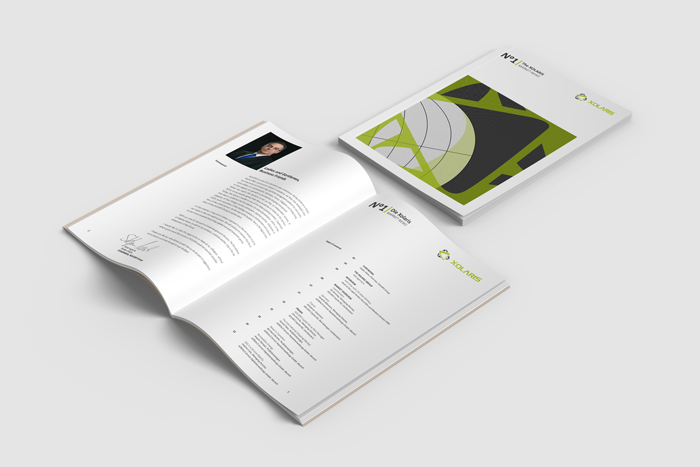XOLARIS Group2023-03-08T10:05:58+00:00
When the FTX crypto exchange went bankrupt in mid-November 2022, quite a few people spoke of the demise of the crypto market. Some even described it as the “meltdown of the crypto market”. Both before and after the FTX issue, companies in the so-called crypto industry have repeatedly found themselves in trouble and each time this happens, there is speculation about the downfall of the entire crypto market.
For some time now, the term cryptoasset or blockchain has been used for almost everything a) when you want to sound cool and sexy and b) when something doesn’t fit into one of the classic asset classes.
It is therefore all the more important to look very closely at cryptoassets as a potential form of investment. Basically, cryptoassets can be broken down into 3 different types:
- Direct investment in cryptocurrencies like Bitcoin, Etherium etc. using classic investment strategies such as buy and hold, etc.
- Investment in the process structure of cryptocurrencies, e.g. mining
- Investment in companies from the crypto and blockchain industry – often referred to as Web 3.0 or digital assets
Colloquially, all three investment opportunities are known as “crypto” or “blockchain”. On closer inspection, however, they represent completely different investment strategies and thus also different risk profiles.
Direct investment in cryptocurrencies usually involves classic investment strategies such as buy and hold. In this case, currencies are bought or sold using defined parameters or, at best, chart analyses, always linked to the hope that not all currencies are subject to the same economic cycle. A functioning risk management system should provide the absolute basis for these investment strategies. As a rule, this should primarily have a quantitative basis, i.e. be based primarily on empirical data and not on a qualitative consideration of future expected values. Especially in risk management, it is important to take a cumulative approach due to the high technical content of cryptocurrencies. When evaluating a cryptocurrency, both quantitative and qualitative characteristics must be taken into account. This includes external data providers, especially if you want to be able to evaluate the technical risks in the best possible way. Another concern is monitoring the liquidity of individual values. In the past, the “lemming effect” meant that the market did not contain the necessary liquidity to eliminate risks. For these reasons, cryptoassets must be considered as far more multidimensional than, for example, shares or bonds.
Currently, however, only a handful of systems exist that even deserve the name risk management in the context of investing in cryptoassets.
Investments in the process structure, such as the mining of Bitcoin, currently play a negligible role in the range of feasible investment opportunities. In the years up to 2020, the sector offered the potential for very high earnings with a good risk/return profile. The continuous increase in hash rates, combined with rising purchase prices, the rapidity of hardware development and growing debate around energy efficiency, have noticeably reduced the attractiveness and ultimately the feasibility of financing structures. In addition, due to the now firmly established large mining companies (“mining pools”), a small number of market participants serve a large part of the overall market, resulting in a centralisation of decentralised ideologies that ensures clear dependencies of interest.
The venture capital market is currently experiencing increasing demand from investors, especially investments in so-called Web 3.0 companies or digital assets that have business models which can be assigned to the crypto or blockchain market. These companies are usually involved in the development or implementation of new technological processes, as well as in the symbiosis of traditional industries with “new technology”. Venture capital offers very interesting investment opportunities in the company development phase. It is important to have an experienced asset manager with an international management team that has connections in the sector and access to investment opportunities. We could mention Mocha Ventures (https://mochaventures.com) as an example here.
Basically, investments can be made via three different structuring options: unregulated offshore structures, the classic regulated AIF (Alternative Investment Fund) or tokens. In contrast to offshore structures, fully regulated AIFs are subject to the highest form of regulation in Europe, ensuring the separation of responsibilities between the management of assets by the AIF manager and the power of disposal over the liquidity by the depositary, which is so important for investors. In addition, as a safeguard for investors the assets are investigated at least once a year by an independent auditor. It is also indispensable to have a network of experts with the necessary knowhow in their respective areas of responsibility. From the investor’s point of view, however, one of the most important arguments for a regulated AIF as opposed to a token should be the security of ownership rights to the asset. This is not the case with a token, meaning that it is often not the actual asset that is tokenised here, but a subordinated loan or bond.
With regard to the third form of investment, something that all three forms of investment structure have in common is the paramount importance of both the investment strategy and the parties and protagonists involved being described and transparently disclosed. Regulation, meanwhile, ensures that under corporate and regulatory law, the parties involved have sufficient experience in their respective areas of responsibility and have coordinated methods and processes designed to protect the investor’s assets.
XOLARIS is now in its eleventh year of existence. Having started as a classic back-office outsourcer based in Constance, we have now developed into an international structuring and fund management platform for real assets, with offices in Liechtenstein, Germany, France, Singapore and Hong Kong.
In this regard, our growth is consistently breaking new ground.
When we made the decision to set up KVG, an independent service, in 2014, many people agreed that there would be no market for this service.
Today, the ManCo market is one of the fastest growing markets. Expansion into Asia in 2018 laid the foundations for internationalisation, which, in the capacity of first foreign market participant, reached another milestone in 2020, with relocation of the holding company to Liechtenstein and acquisition of the AIFM licence. As the next AIFM location, Paris is the logical next step of the XOLARIS Group’s success story.
In this context, it was and is always important to us that we remain true to our roots in the real asset business. We will continue to maintain this focus as we move towards becoming a global real asset investment group.
With our new CI, we want to break new ground in this area. The first edition of Market News as well as our podcasts, constitute another step in the development of the Group.
I would like to take this opportunity to thank all my colleagues, without whose great work the success of XOLARIS would not have been possible.
I hope you like our new format as well. Even so, we are open to suggestions and criticism and look forward to your feedback.



